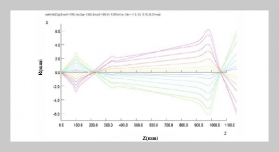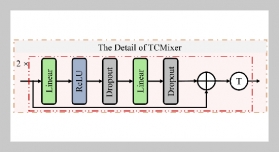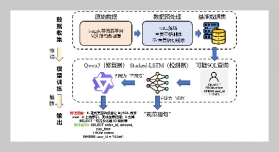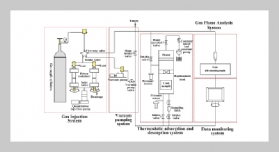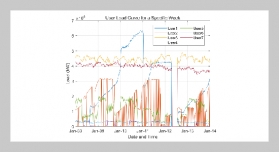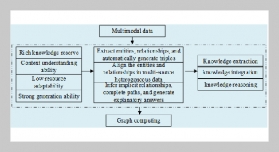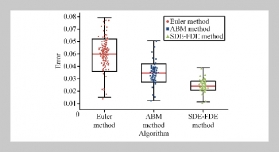REFERENCES
- [1] Porwal, A. and Hewage, K. N. “Building Information Modeling (BIM) Partnering Framework for Public Construction Projects,” Automation in Construction, Vol. 31, pp. 204214 (2013). doi: 10.1016/j.autcon. 2012.12.004
- [2] Barlish, K. and Sullivan, K.,“How to Measure the Benefits of BIM A Case Study,” Approach Automation in Construction, Vol. 24, pp. 149159 (2012). doi: 10.1016/j.autcon.2012.02.008
- [3] Redmond, A., Hore, A., Alshawi, M. and West, R. “Exploring How Information Exchanges Can be Enhanced through Cloud BIM,” Automation in Construction, Vol. 24, pp. 175183 (2012). doi: 10.1016/ j.autcon.2012.02.003
- [4] Park, C.-S., Lee, D.-Y., Kwon, O.-S. and Wang, X., “A Framework for Proactive Construction Defect Management Using BIM, Augmented Reality and Ontology-Based Data Collection Template,” Automation in Construction, Vol. 33, pp. 6171 (2013). Information on http:// dx.doi.org/10.1016/j.autcon.2012.09.010. doi: 10.1016/ j.autcon.2012.09.010
- [5] Shen, W., Shen, Q. and Sun, Q., “Building Information Modeling-Based User Activity Simulation and Evaluation Method for Improving Designer User Communications,” Automation in Construction, Vol. 21, pp. 148160 (2102). doi: 10.1016/j.autcon.2011.05.022
- [6] Shahi, A., West, J. S. and Haas, C. T., “Onsite 3D Marking for Construction Activity Tracking,” Automation in Construction, Vol. 30, pp. 136143 (2013). doi: 10.1016/j.autcon.2012.11.027
- [7] Bhatt, M. L., Borrmann, A., Amor, R. and Beetz, J., “Architecture, Computing, and Design Assistance,” Automation in Construction, Vol. 32, pp. 161164 (2013). doi: 10.1016/j.autcon.2013.01.001
- [8] Davies, R. and Harty, C., “Implementing ‘Site BIM’: A Case Study of ICT Innovation on a Large Hospital Project,” Automation in Construction, Vol. 30, pp. 1524 (2013). doi: 10.1016/j.autcon.2012.11.024
- [9] Zhang, S., Teizer, J., Lee, J. K., Eastman, C. M. and Venugopal, M., “Building Information Modeling (BIM) and Safety: Automatic Safety Checking of Construction Models and Schedules,” Automation in Construction, Vol. 29, pp. 183195 (2013). doi: 10.1016/j. autcon.2012.05.006
- [10] Lee, S.-I., Bae, J. S. and Cho, Y. S., “Efficiency Analysis of Set-Based Design with Structural Building Information Modeling (S-BIM) on High-Rise Building Structures,” Automation in Construction, Vol. 23, pp. 2032 (2012). doi: 10.1016/j.autcon.2011.12.008
- [11] Kim, C., Son, H. and Kim, C., “Automated Construction Progress Measurement Using a 4D Building Information Model and 3D Data,” Automation in Construction, Vol. 31, pp. 7582 (2013). doi: 10.1016/j. autcon.2012.11.041
- [12] Ding, L.Y., Zhou, Y., Luo, H. B. and Wu, X. G., “Using nD Technology to Develop an Integrated Construction Management System for City Rail Transit Construction,” Automation in Construction, Vol. 21, pp. 6473 (2012). doi: 10.1016/j.autcon.2011.05.013
- [13] Aram, S., Eastman, C. and Sacks, R., Requirements for BIM Platforms in the Concrete Reinforcement Supply Chain,” Automation in Construction, Vol. 35, pp. 117 (2013). Information on http://dx.doi.org/10.1016/j. autcon.2013.01.013. doi: 10.1016/j.autcon.2013.01.013
- [14] Smith, D. K. and Tardif, M., Building Information Modeling: A Strategic Implementation Guide for Architects, Engineers, Contractors, and Real Estate Asset Managers, John Wiley & Sons (2009). doi: 10. 1002/9780470432846.ch2
- [15] Chelson, D. E., The Effects of Building Information Modeling on Construction Site Productivity, Unpublished Ph.D. Thesis, University of Maryland, College Park (2010). Information on http://hdl.handle.net/ 1903/10787



